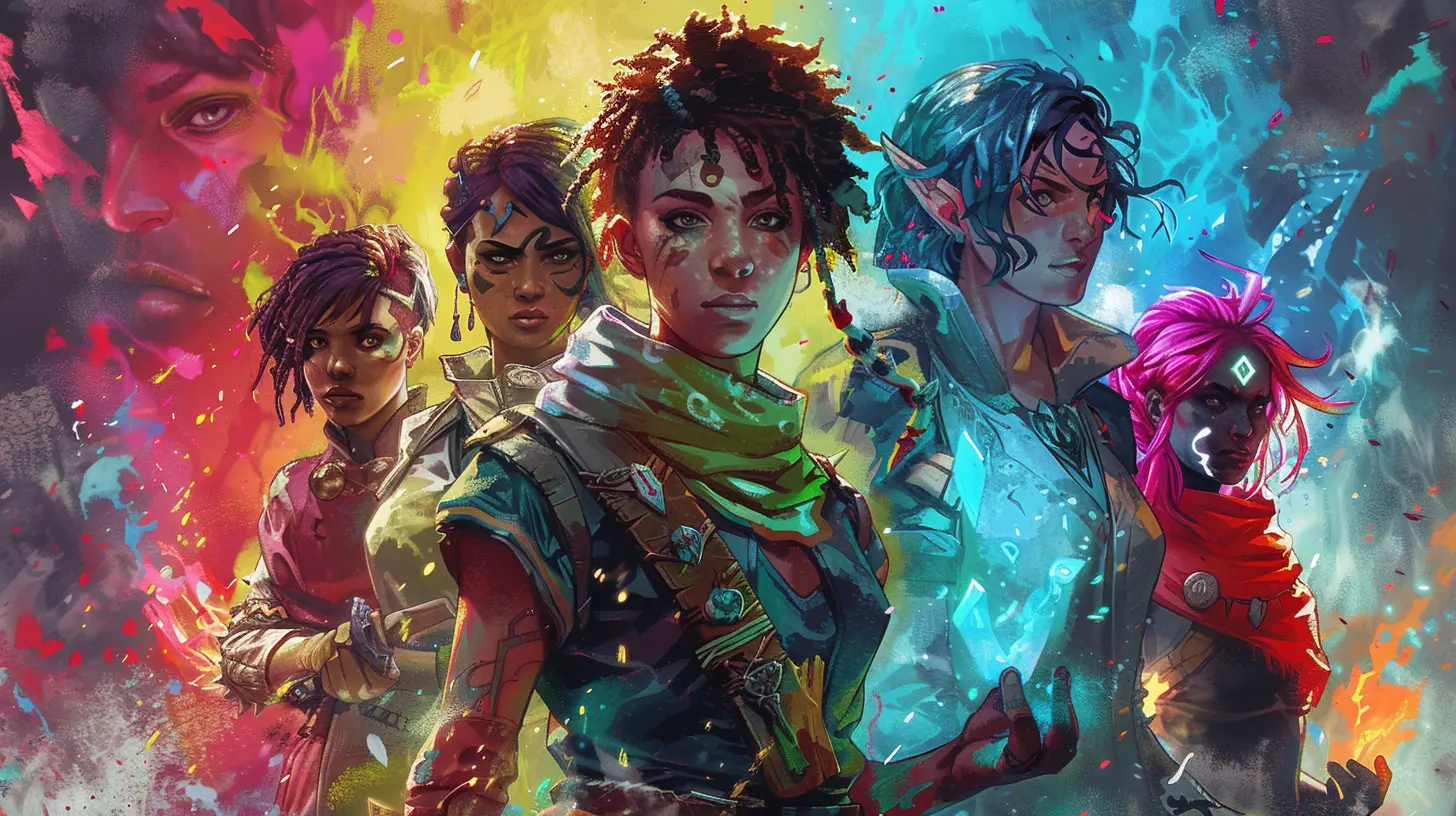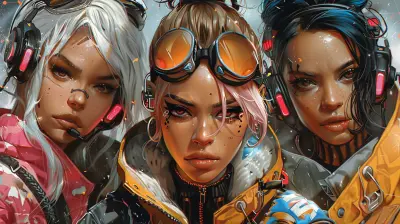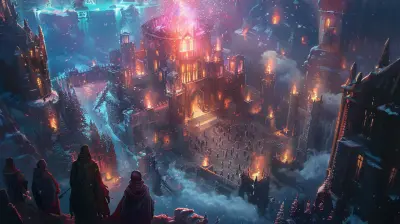Celebrating Diversity in Indie Game Characters
15 November 2025
Let’s just say it: mainstream games have come a long way—sure—but indie games? They've been leading the diversity party like that one friend who insists on wearing glitter to brunch. And we love them for it.
In the vast, pixelated galaxy of indie titles, you'll find more than just epic quests, clever mechanics, and questionable voice acting (hey, it adds character). You’ll find characters that reflect the beautiful, chaotic, multi-colored tapestry of humanity—and sometimes, humanity with tentacles, wings, or sentient mushrooms. But hey, we’re here for all of it.
So buckle up, buttercup. We're diving into a whirlwind tour of how indie developers are flipping the script and celebrating diversity like it’s Game of the Year material. Spoiler: It totally is.
What Even Is "Diversity" in Indie Games?
Let’s start with the basics. Diversity, when we talk gaming, isn’t just about skin tone—or even gender. It’s about different cultures, experiences, backgrounds, sexual orientations, abilities... the whole enchilada.In indie games, diversity often shows up in unexpected, delightful ways. Think of it as gaming’s version of a surprise party: you’re not sure what to expect, but suddenly you’re dancing next to a non-binary orc with anxiety who just wants to save their village. Yes, please.
Unlike their AAA siblings, indie devs don’t usually have a boardroom full of executives breathing down their necks saying, “Make it safer. Blonder. With more guns.” Instead, these devs get weird, get bold, and get real.
Why Indie Games Get It Right (Most of the Time)
Let’s be honest. Indie games are that friend who always shows up with the coolest outfit, a story about hitchhiking through Iceland, and a weird but fantastic thrift-store vinyl. They're not here to follow the rules—they're here to tell their truth.That's why indie devs are crushing it when it comes to diversity. They often make the kind of games they themselves want to see. Many are members of marginalized communities, pouring their own experiences into characters that feel real, complex, and gloriously human (or humanoid, or half-cat-half-baguette… we don’t judge).
You won’t find many cookie-cutter protagonists here. Nope. These characters might have trauma, joy, love lives, disabilities, cultural traditions, or banana-shaped heads—and all of that is valid.
Representing Different Cultures: Let’s Dance Across the Globe
Forget generic fantasy lands inspired by Medieval Europe. Indie games are out here globe-trotting through lore-rich lands inspired by Mexican folklore, African traditions, Southeast Asian spirituality, and Indigenous mythology—and they’re doing it with respect and flair.Take “Never Alone” (Kisima Ingitchuna), a game developed in partnership with the Iñupiat people of Alaska. It’s a side-scrolling adventure that’s not just about solving puzzles; it’s about reaffirming cultural identity, oral storytelling, and community. Oh, and yes, you team up with an adorable arctic fox. 10/10, would follow into a snowstorm.
Or how about “Raji: An Ancient Epic”, which brings you face-to-face with Indian mythology in dazzling detail? It’s like every history teacher’s wildest dream—but with combat and glowy magic.
These games don’t just check a box—they immerse you in the stories, struggles, and beauty of cultures often left off the gaming map.
Gender and Sexuality: Time to Queer the Game-scape
Now let’s talk about some heart-shaped rainbows, shall we?Indie games are absolutely slaying when it comes to LGBTQIA+ representation. And they don’t just throw in a character with a rainbow pin and call it a day. No, no. We’re talking real, nuanced representation.
In “Celeste”, the protagonist Madeline’s journey to scale a deadly mountain is also a metaphor for personal growth and identity. Later confirmed as a trans character, Madeline’s story is deeply emotional and profoundly human. Climbing a mountain? More like climbing into our hearts.
And don’t even get me started on “Dream Daddy”—a dating sim where your character (a hot dad, naturally) romances other dreamy dads. It’s wholesome, it’s charming, and it's low-key one of the best visual novels wrapped in a flannel shirt.
Then there’s “A Normal Lost Phone”, a game where you uncover the life of a missing teen by exploring their texts, music, and photos. It slowly unfolds a story involving gender identity and acceptance—without spoon-feeding you. It trusts you to get it, and that’s powerful.
Disability Representation: More Than Just a Side Effect
Can we talk about how awesome it is when games include disabled characters who aren't just there for pity points? Indie games are leading the way in showing that having a disability isn’t the whole story—it’s just part of a much bigger, more badass narrative.In “The Vale: Shadow of the Crown”, you play as a blind princess. That’s not a twist—it’s fundamental to the gameplay. With rich sound design and ZERO visuals, the game lets you “see” through sound. It's revolutionary, and honestly, it slaps.
Indie titles also bring mental health into focus. “Night in the Woods” gives us Mae, a college dropout dealing with depression and disassociation. It's raw, it’s real, and it hits harder than a raccoon in an alley at 3 a.m.
These games say, “Hey, people with disabilities are adventurers, heroes, flawed, funny, brave, sarcastic—and yeah, sometimes they just want to nap.” Same, my dude. Same.
Diverse Body Types: Not Everyone Has a Six-Pack, Karen
You ever notice how protagonists in big-budget games all seem chiseled like Greek statues? It’s like abs are a requirement for saving the world. But in indie games? All bodies are welcome on the hero squad.In “Later Alligator”, you play as a jiggly cartoon gator detective and it’s freaking delightful. Or take “Wandersong”, where you’re a bard on a musical journey. No muscles, no weapons—just a chubby, joyful little guy with a big heart and even bigger vocals.
These games remind us that you don’t need to look like a Marvel superhero to be a hero. You just need a good story to tell—and maybe a really good scarf.
Neurodiversity and Mental Health Awareness: Let’s Get Inside Our Heads
Indie devs have been really leaning into representing neurodiverse characters—and not just as quirky sidekicks or the “weird hacker.” We're talking depth.“To The Moon” delicately touches on themes of memory loss, neurodivergence, and emotional struggles. It’s like a Pixar movie that punches you right in the feelings.
Meanwhile, “One Dreamer” puts you in the shoes of a burnt-out indie developer. And no, that’s not ironic. The game explores anxiety, failure, and chasing dreams in a world that often forgets to care. It’s meta, it’s moving, and it’s realer than your 5 a.m. coding breakdown.
These games are therapy with a boss fight—deep, raw, and weirdly comforting.
Representation Behind the Scenes: Who Makes the Games Matters Too
Let’s not forget—diversity in the games is great, but diversity among the developers is just as crucial. Indie studios are often passion projects, and many are founded by women, BIPOC creators, queer folks, disabled gamers, and other marginalized voices.They’re not just creating diverse characters—they're telling their own stories. And that hits different.
Games like “If Found…”, developed by Llaura McGee, are deeply personal. This visual novel follows a trans woman in Ireland, and it paints her experience with raw honesty, beautiful art, and zero apologies.
Supporting indie games means supporting diverse creators—and honestly, that’s a win-win. You get better stories, and the world gets a little more inclusive, one pixel at a time.
The Challenges: It's Not All Rainbow Sprinkles
Okay, let’s not pretend it’s all sunshine and character customization. Indie devs face challenges like low budgets, limited marketing, and wearing way too many hats. Sometimes representation isn’t perfect. Sometimes a good idea gets lost in translation—or worse, Twitter.But here’s the thing: they’re trying. They’re learning, growing, listening. And when they mess up, they often own it, patch it, and move forward. That’s more than I can say for some triple-letter studios (you know who you are, EA).
Final Boss Time: What Can You Do?
Want to support diversity in indie games? It’s easier than beating the Water Temple in Ocarina of Time (barely).- Buy and review indie titles that center marginalized voices
- Follow diverse devs on social media
- Support their Kickstarters or Patreons
- Recommend these games to your friends (even the one who only plays Skyrim mods)
Remember: your money is your vote. And every dollar tells the gaming world, “Hey, I want more amazing characters who break the mold.”
Wrapping It Up (Like a Burrito of Representation)
Indie games are the chaotic-good champions the industry needs. They’re bold, inclusive, and maybe a little janky sometimes—but that’s part of the charm.By celebrating diversity, these games don’t just reflect the world we live in—they imagine a better one. A world where everyone, regardless of identity, gets to be the main character. And let’s be real… in a world full of sequels and remakes, that’s the kind of creativity we need.
So next time someone tells you indie games are “just little games,” smile politely and hand them a controller. Then introduce them to a queer, disabled bard fighting capitalism with a ukulele.
Trust me. That’ll shut them up real quick.
all images in this post were generated using AI tools
Category:
Indie GamesAuthor:

Luke Baker

